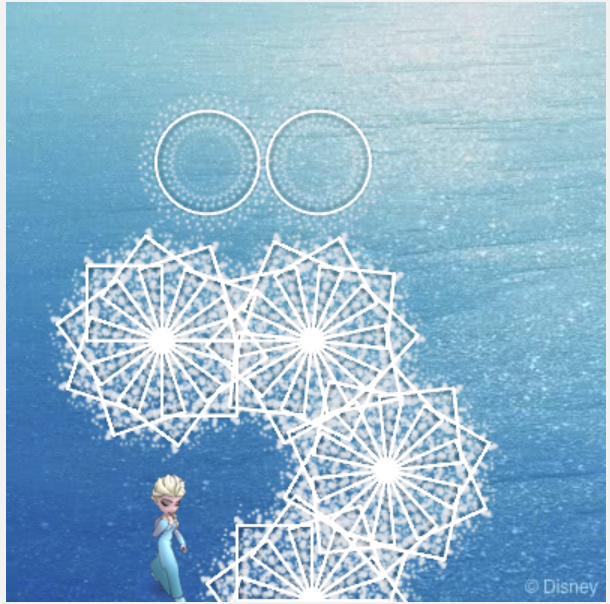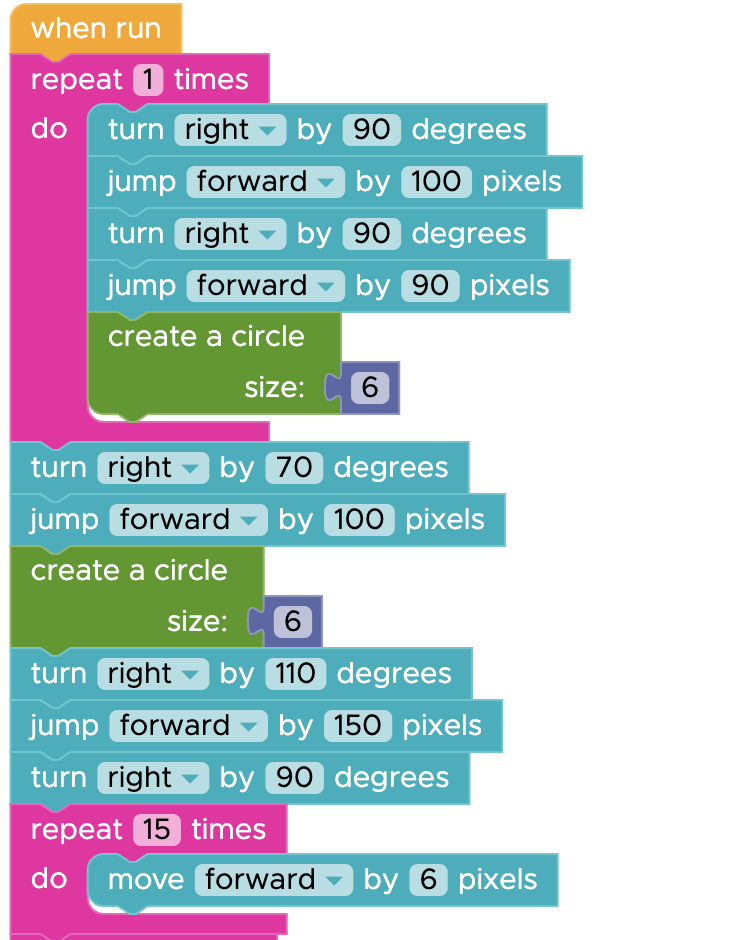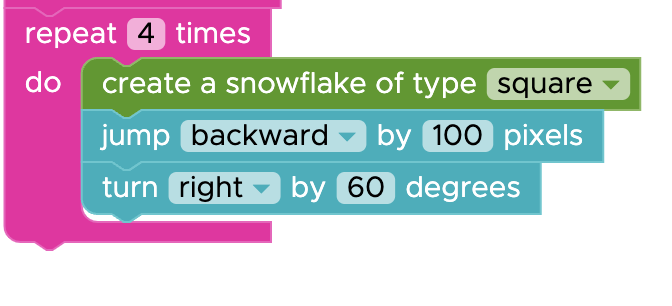Hour of Code and Video games
For today’s class, we got to work on the website “Hour of Code.” This website provides simple, step-by-step instructions to assemble pre-fabricated chunks of code into creations that would normally be overly complicated for an elementary student.
Here are some sample snowflake designs I created using the Elsa and Anna tutorial from Hour of Code.

Here is the code I had to write to get it to make these patterns.


Here is a link to the Elsa & Anna Hour of Code walkthrough so that you too can create snowflakes with code.
Computational thinking
Can computational thinking help learners become better problem solvers? I believe that the process of taking apart a complex idea by breaking it into parts is a fantastic way to learn. For example, we can apply this principle to the PB&J sandwich-making tutorial we viewed in class. If we simply toss a bunch of instructions to a computer, we could end up with something that most definitely does not meet our expectations, but meets the parameters that were given to the computer. By analyzing each step carefully, we can give clear and specific instructions to a wonder snack.
Gaming in education
I think that the game “Minecraft” is a versatile platform that can offer a variety of lessons for students. Let’s look at the block-based nature of the game as a platform for math. In my grade 2-3 class, the students are learning to examine an image of a pyramid to determine how many squares it would take to make it. An image is great, but what if the teacher could move around the pyramid in 3D? What if after the students have made their guesses, they get to build the pyramid to determine if they were right? What if they got to CREATE THEIR OWN SHAPES TO SHARE!!! Boom! Massive callback to “Redefinition” from the SAMR model. Finally, Minecraft teaches important life lessons such as “We do not fear death, but what we stand to lose from it.”